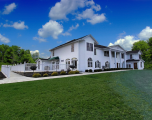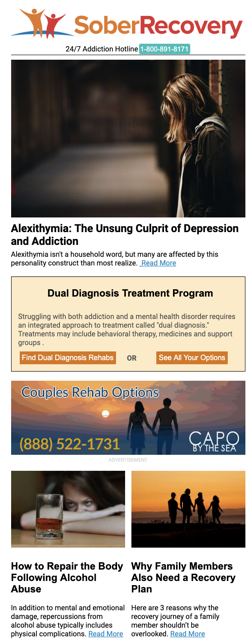Hallucinogens and Shamanism: A Brief Article Baker LA
Baton Rouge, LA
Detoxification
Types of Care
Residential short-term treatment (30 days or less)
Language Services
ASL or other assistance for hearing impaired

Substance abuse
Types of Care
Residential short-term treatment (30 days or less)
Language Services
ASL or other assistance for hearing impaired

Substance abuse
Types of Care
Outpatient
Special Programs/Groups
Women, DUI/DWI offenders
Language Services
ASL or other assistance for hearing impaired, Spanish

Greenwell Springs, LA
(877) 664-2248
Services Provided
Substance abuse , Detoxification, Halfway house
Types of Care
Residential short-term treatment (30 days or less), Residential long-term treatment (more than 30 days)
Special Programs/Groups
Adolescents
Language Services
ASL or other assistance for hearing impaired

Substance abuse
Types of Care
Outpatient, Partial hospitalization/day treatment
Special Programs/Groups
Persons with co-occurring mental and substance abuse disorders, DUI/DWI offenders
Language Services
ASL or other assistance for hearing impaired

Substance abuse , Halfway house
Types of Care
Residential long-term treatment (more than 30 days), Outpatient

Substance abuse , Halfway house
Types of Care
Residential short-term treatment (30 days or less), Residential long-term treatment (more than 30 days)
Special Programs/Groups
Women, Men

Substance abuse , Halfway house
Types of Care
Residential long-term treatment (more than 30 days)
Special Programs/Groups
Pregnant/postpartum women, Women, Residential beds for clients' children
Language Services
ASL or other assistance for hearing impaired

Detoxification
Types of Care
Residential short-term treatment (30 days or less)
Language Services
ASL or other assistance for hearing impaired

(888) 314-5914
Services Provided
Substance abuse , Detoxification, Buprenorphine Services
Types of Care
Residential short-term treatment (30 days or less), Residential long-term treatment (more than 30 days)
Special Programs/Groups
Persons with co-occurring mental and substance abuse disorders, Men


Hallucinogens and Shamanism: A Brief Article
In the western area, many drugs are highly refined and attempted excessively or habitually, in ways that are addictive and harmful. However, in traditional societies powerful mind-active plants are consumed ritually for therapeutic purposes or for transcending normal, everyday reality. In this article I will look in detail at the ritual use of mind-active drugs for therapeutic mind-expansion as part of shamanic traditions in comparison to the modern abuse of pharmaceutical drugs as part of drug addictions and dependencies.
The use of psychoactive drugs was studied in the 1960s by Timothy Leary and Richard Alpert who looked at LSD and psilocybin who studied shamanic teachings and practices around the globe. These shamanic traditions involve non-ordinary states of consciousness induced by a variety of methods including ingesting hallucinogenic plants, but also drumming, fasting, wilderness vision questing, use of sweat lodges and others.
Metzner notes that indigenous people have a profound knowledge of plants and herbs and their effects on the body and mind and are well able to distinguish harmful from beneficial medicines. For this reason the vision-inducing plants that have a tradition of shamanic usage are much more likely to be safe, in contrast to newly discovered and synthesized drugs, the use of which may often involve unknown long-term risks.
Western psychotherapy and indigenous shamanism use similar psychoactive substances for healing and obtaining knowledge (call...
Click here to read the rest of this article from Sober Recovery
Featured Facilities
Choosing the right treatment center can be paramount in one’s chance at recovery. While the treatment facility creates a foundation of tools needed for recovery, it is truly the individual, and not the addiction treatment center that determines the end result. When it comes to yourself or a loved one, you are going to want to make sure to choose a facility that has professional accreditations. Located in the Atlanta, Georgia area, Southeast Addiction Center ensures each client receives the tools needed to live a life without addictive substances.From individual therapy to group therapy, to trauma-based therapy and 12-step support, our clients learn how to find their own strength as well as create a support system around them. The transition from addiction to sobriety can be hard, however, at our drug and alcohol rehabilitation program, we guide each client through the process – step by step.
Lake Ariel Recovery Center, like all of the Sanctuary Health Group facilities, is a medically proven recovery facility that provides comprehensive treatment for substance use and co-occurring disorders. Sanctuary Health utilizes Everlasting Recovery, an approach that aligns our client’s recovery journey directly with their life, to extend recovery into a client’s lifestyle. Our unique approach establishes treatment as a daily practice, refocuses an individual away from addiction towards a healthier existence, and makes sustainable recovery achievable. Due to this integration, each client begins Everlasting Recovery by assessing their performance in various aspects of their lives via the bio, psycho, and social model. This initial assessment allows our therapists to craft a personal recovery program, which allows the greatest opportunity for our clients to suppress addiction and adopt recovery as a permanent identity. When attending Lake Ariel Recovery Center, our clients will establish life skills, implement daily routines for lifestyle recovery, and ignite a purpose for achieving better their lives. Through accomplishing these tasks, our clients will achieve sustainable recovery.
Sanctuary at Cherry Hill is a medically proven recovery facility that provides comprehensive treatment for substance use and co-occurring disorders. Sanctuary Health utilizes Everlasting Recovery, an approach that aligns our client’s recovery journey directly with their life, to extend recovery into a client’s lifestyle. Our unique approach establishes treatment as a daily practice, refocuses an individual away from addiction towards a healthier existence, and makes sustainable recovery achievable. Due to this integration, each client begins Everlasting Recovery by assessing their performance in various aspects of their lives via the bio, psycho, and social model. This initial assessment allows our therapists to craft a personal recovery program, which allows the greatest opportunity for our clients to suppress addiction and adopt recovery as a permanent identity. When attending Sanctuary at Cherry Hill, our clients will establish life skills, implement daily routines for lifestyle recovery, and ignite a purpose for achieving better their lives. Through accomplishing these tasks, our clients will achieve sustainable recovery.
Located in Orange County, California, Connections Mental Health is a residential treatment center that focuses on treating a range of mental health conditions. It treats a maximum of 6 clients at a time to create individualized care. With compassion at the core of its approach, the team provides a comprehensive evaluation before treatment to customize clients’ care plans to meet a diversity of needs.Mental Health Treatment Connections Mental Health can help those with depression, anxiety, post-traumatic stress disorder (PTSD), bipolar disorder, borderline personality disorder (BPD), obsessive-compulsive disorder (OCD), schizophrenia, attention-deficit/hyperactivity disorder (ADHD), and suicidal and homicidal ideation. Connections Mental Health additionally has a 24/7 supervised eating disorder program backed by a team of psychiatrists, psychologists, dietitians, and medical doctors. They offer a special program for people with premenstrual dysphoric disorder (PMDD).Comprehensive TherapiesConnections Mental Health uses 1:1, group, and family-based therapy (FBT) to help clients recover. FBT restores healthy habits and builds open communication within the family. They offer evidence-based therapies such as cognitive behavioral therapy (CBT), dialectical behavioral therapy (DBT), eye movement desensitization and reprocessing (EMDR), and motivational interviewing. Connections Mental Health offers medication management based on their clinical assessment. They incorporate the Seeking Safety program into treatment. Seeking Safety creates a safe space to develop coping skills, emotion regulation, and resilience through therapies that focus on healing current feelings and behaviors, not past ones.Holistic HealingConnections Mental Health utilizes holistic tools as part of their rehab process like yoga, mindfulness, and meditation, and other modalities like art therapy, to complement the recovery process. These therapies can help clients develop coping strategies, reduce stress, and improve overall well-being. Connection Mental Health’s Orange County residential home has a backyard with comfortable seating and a firepit.




